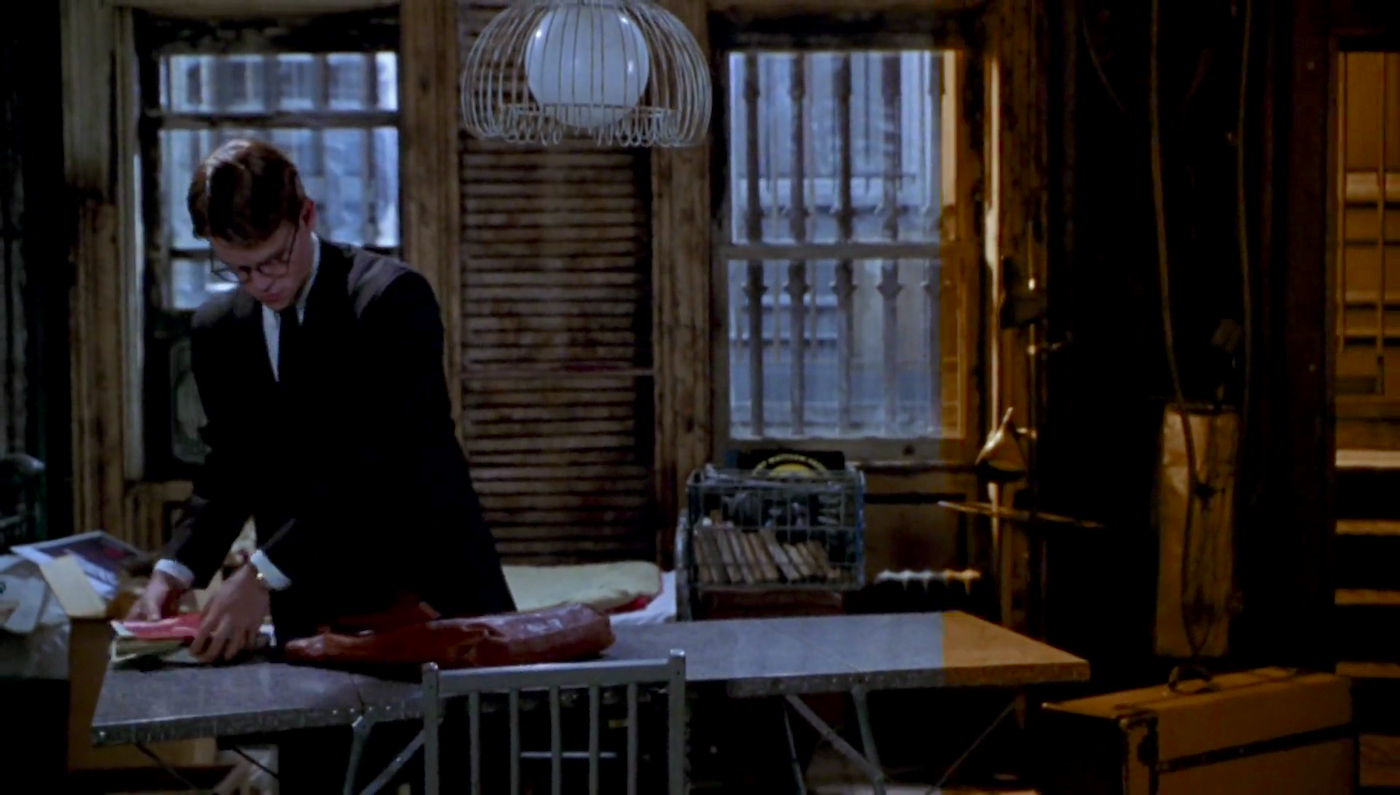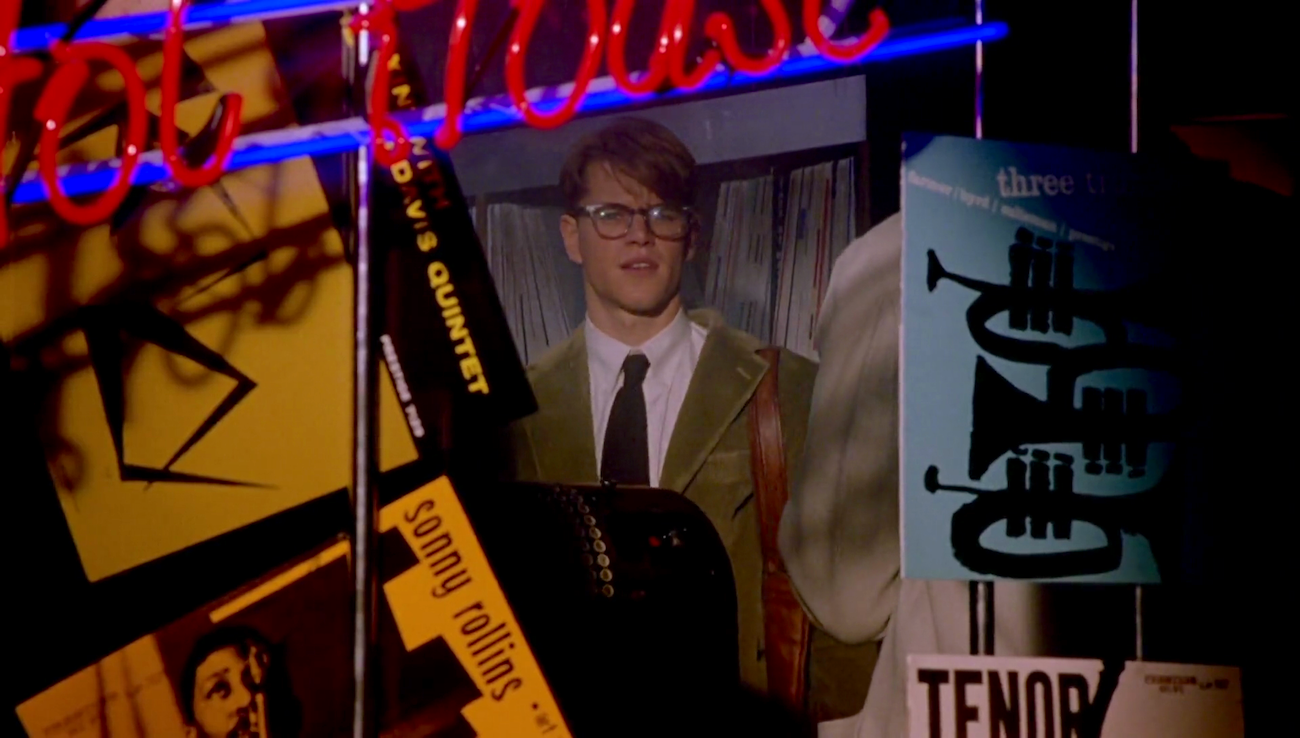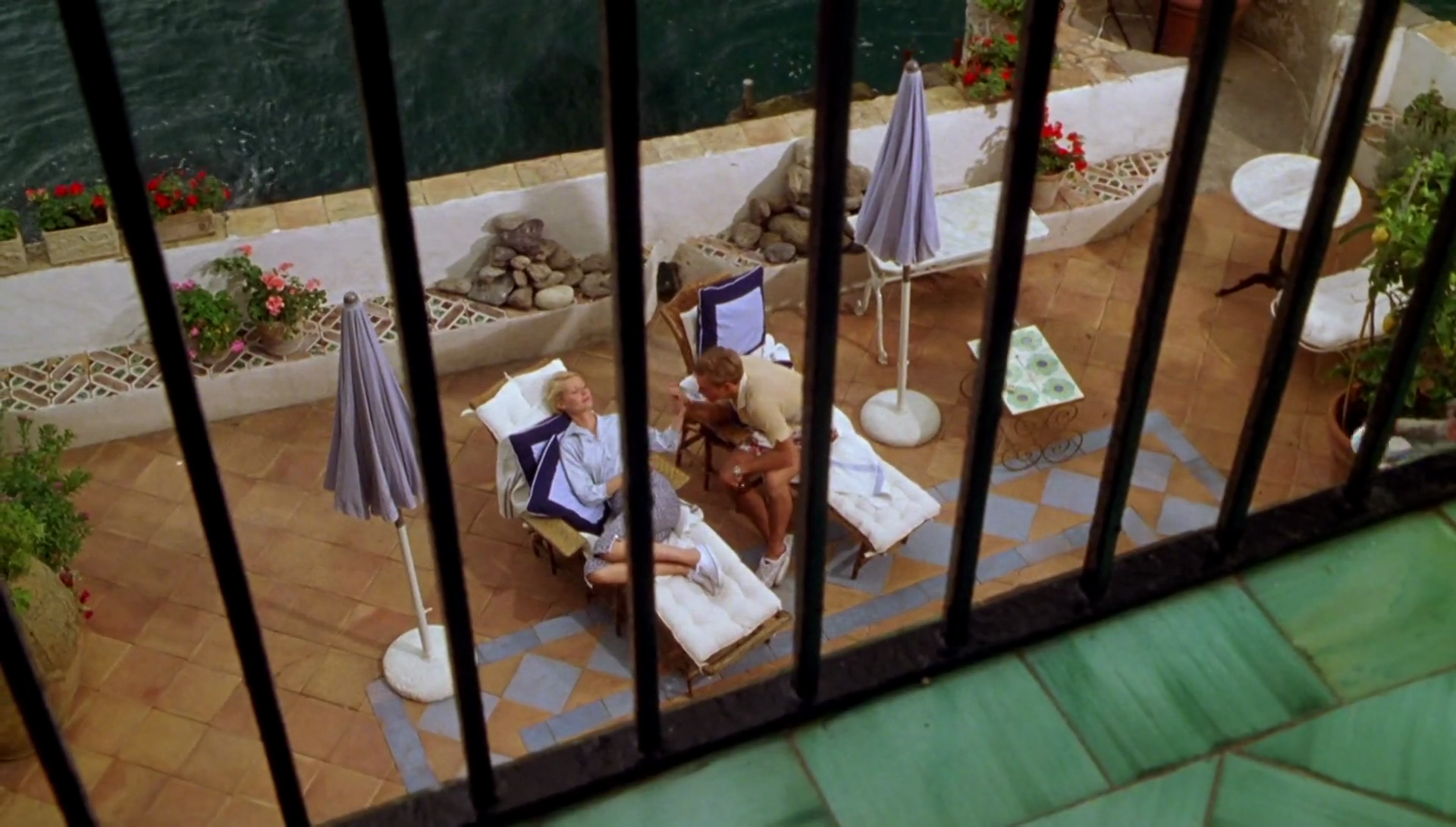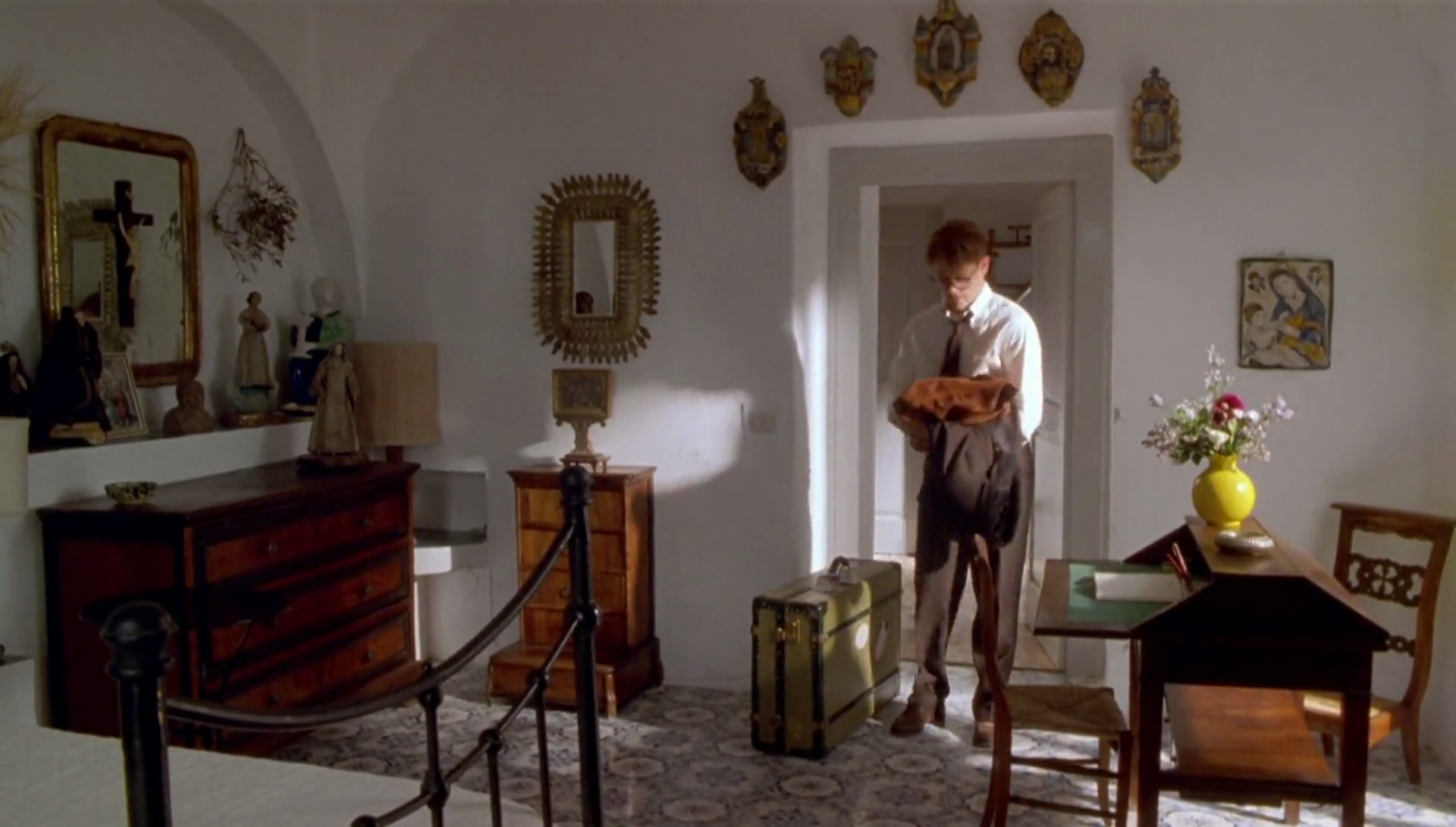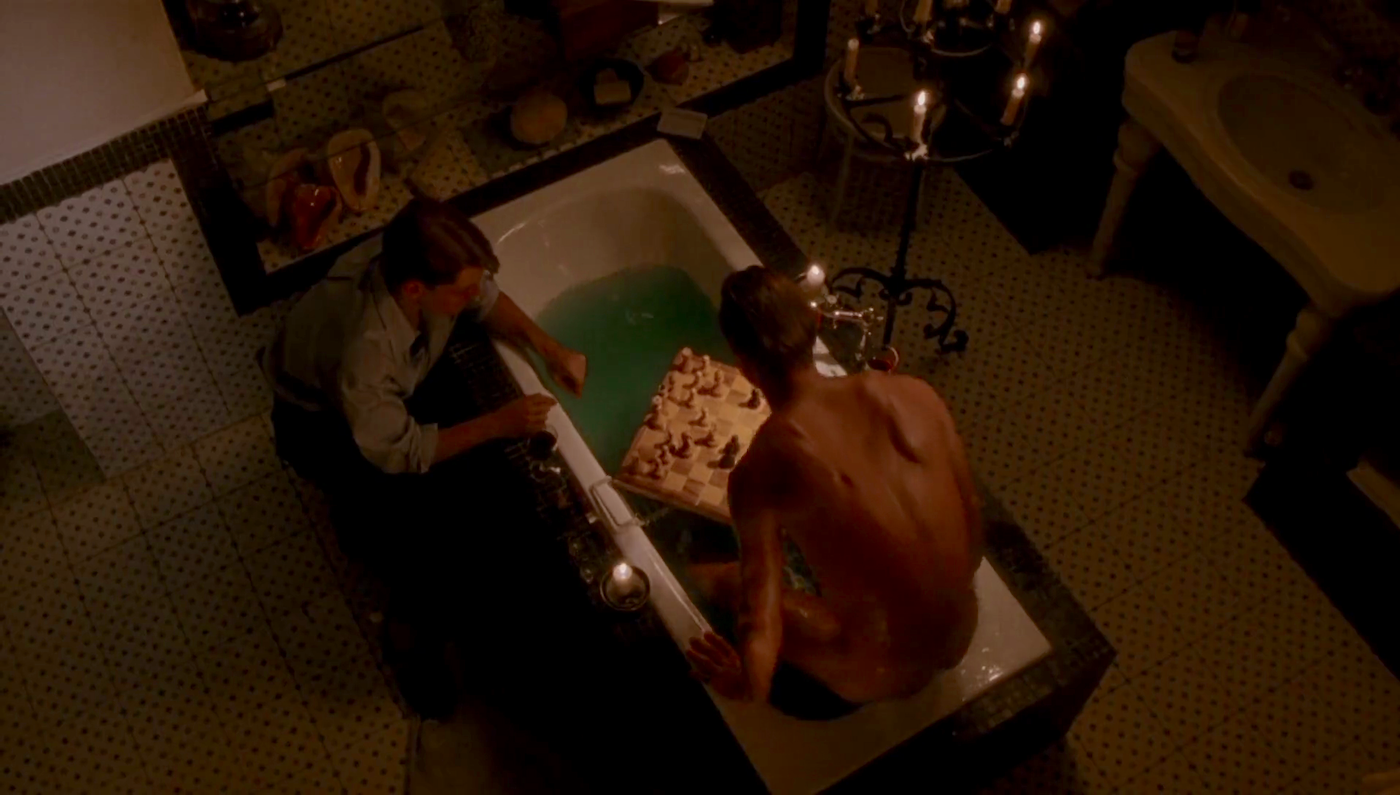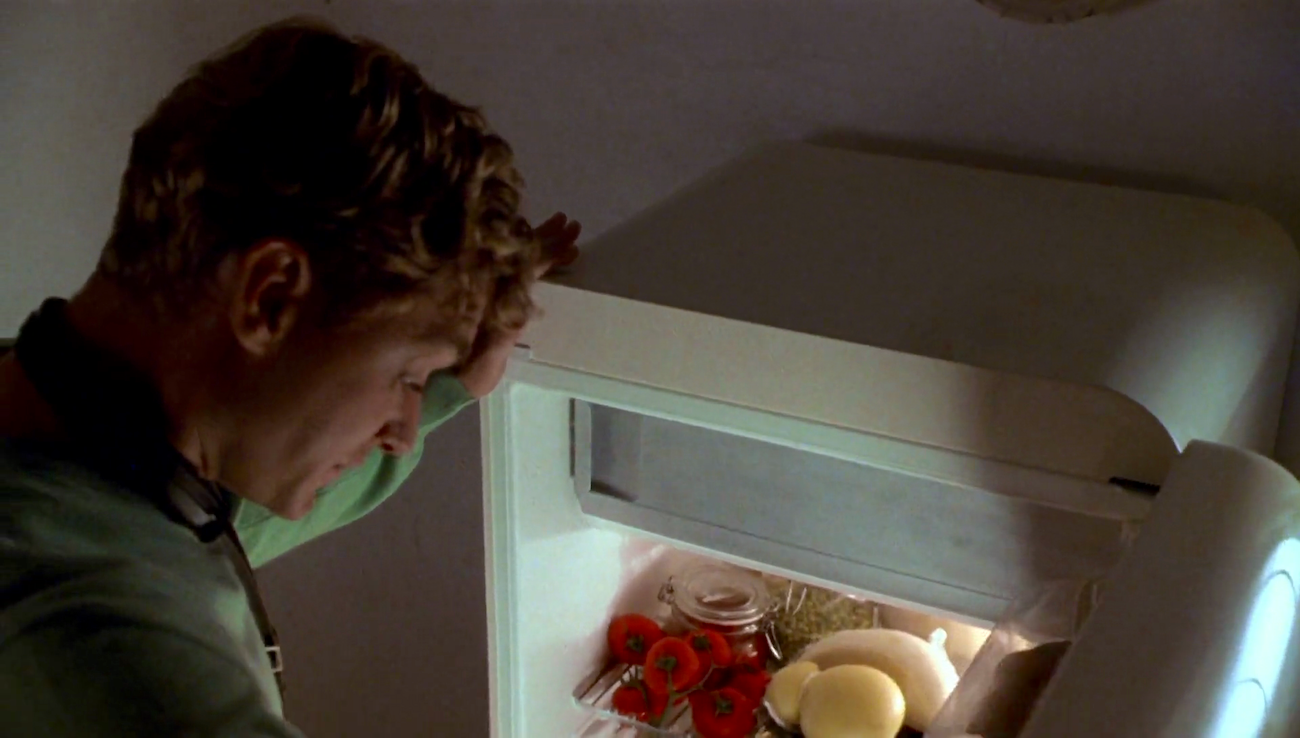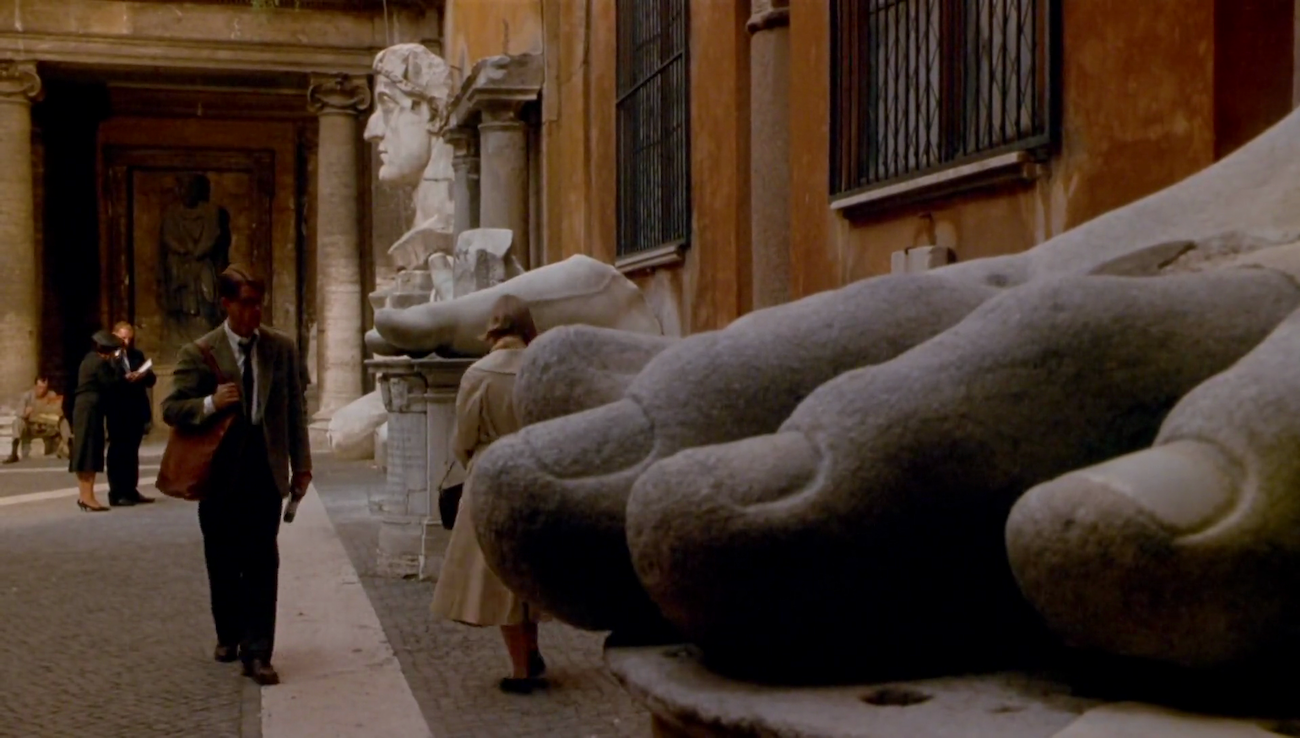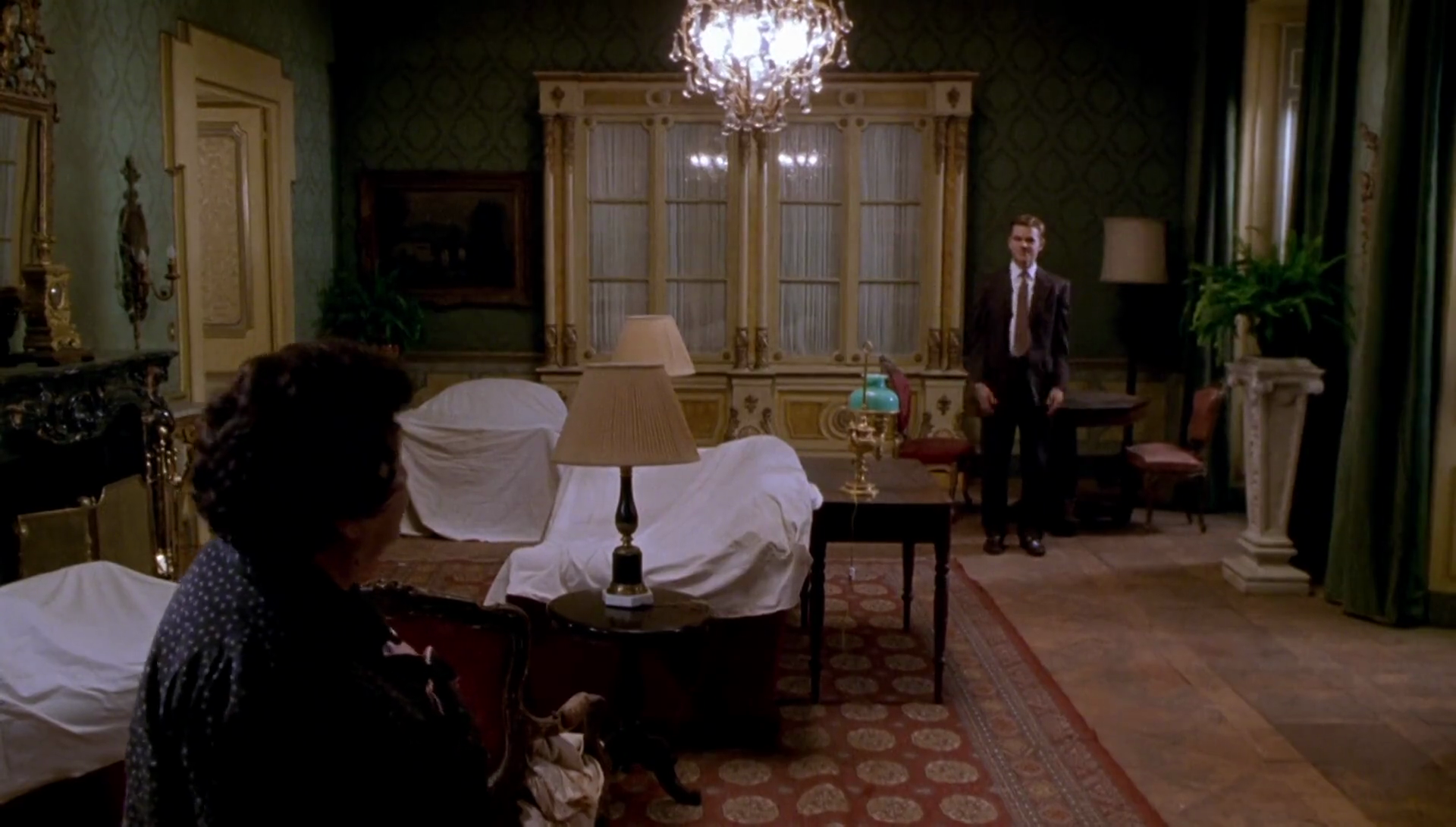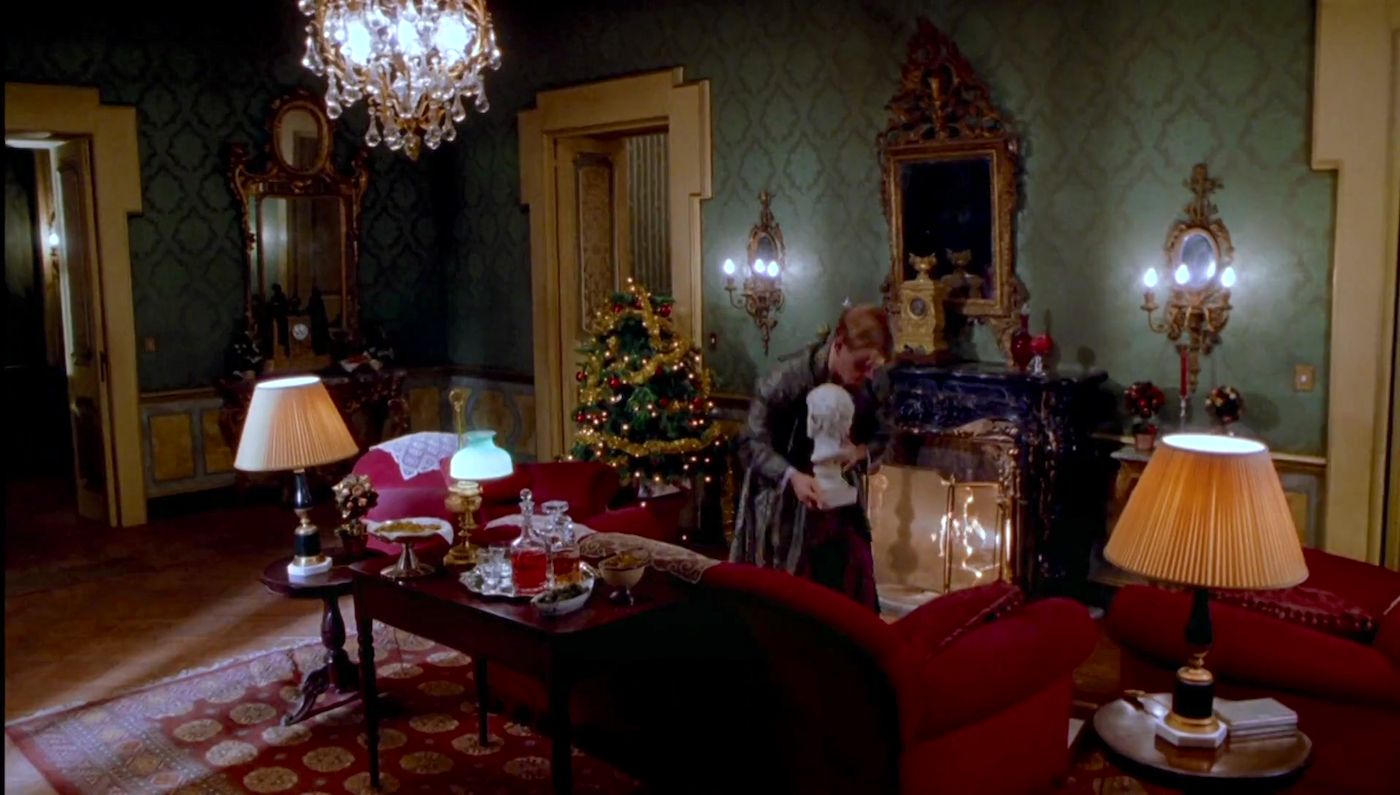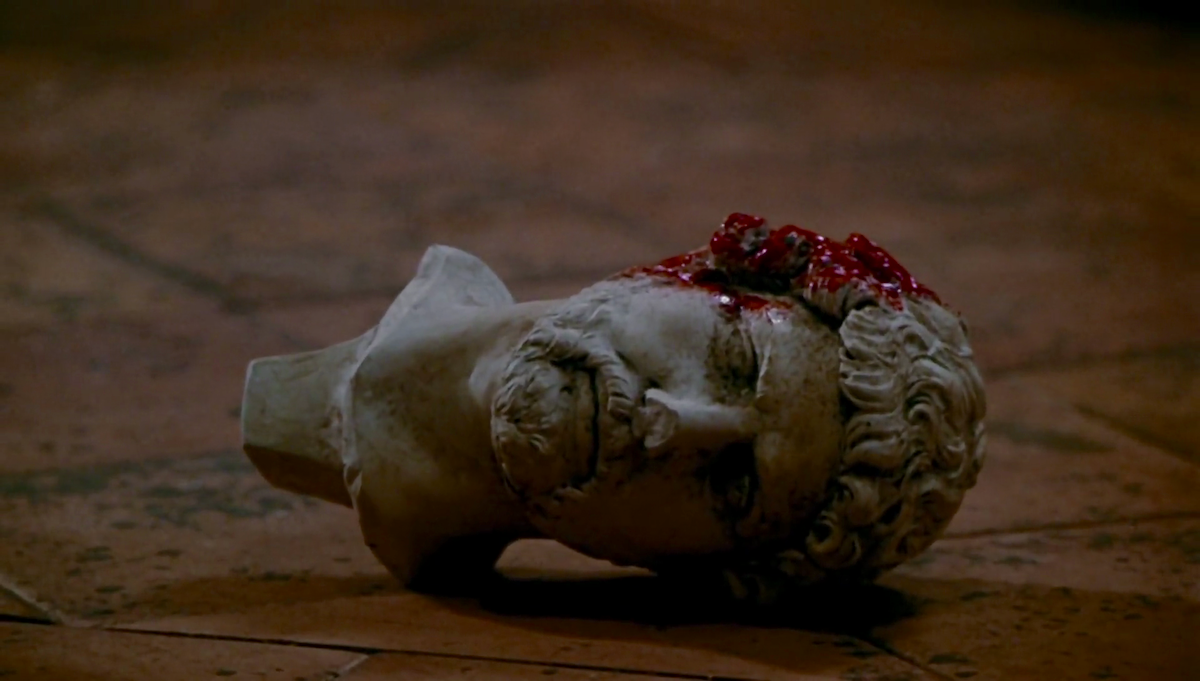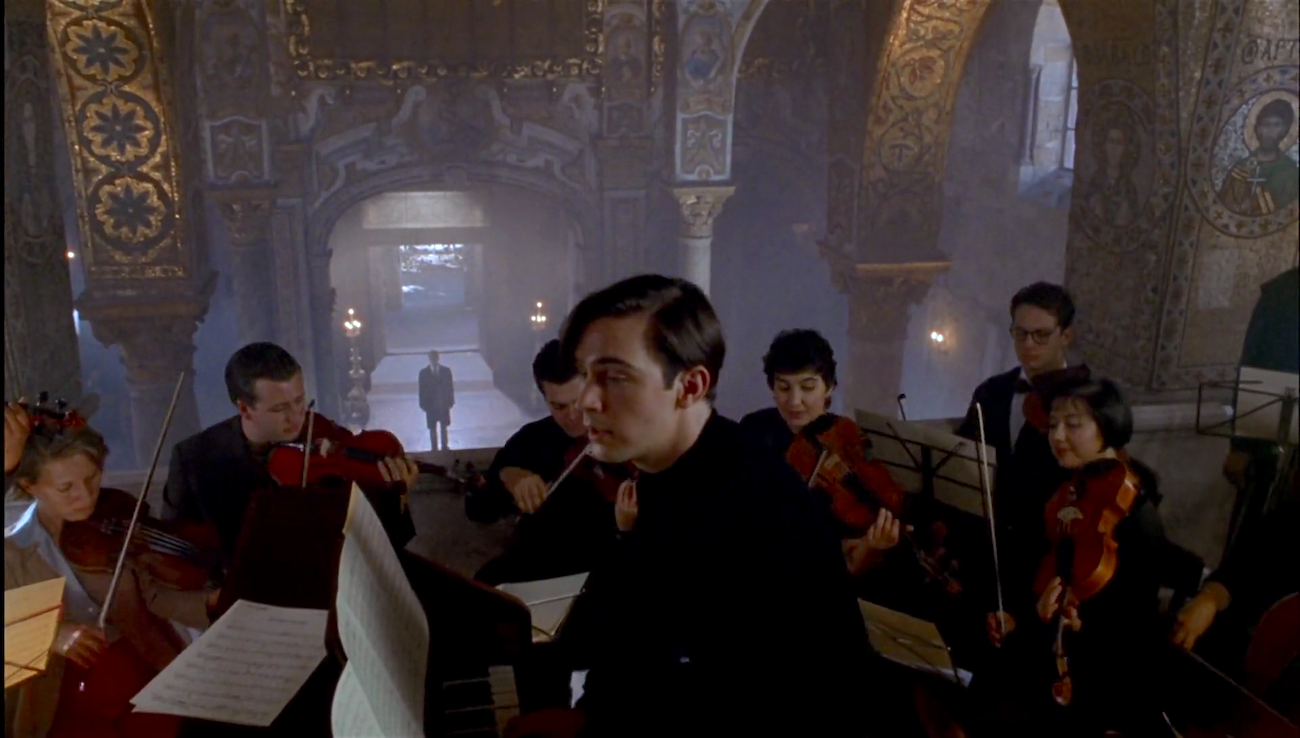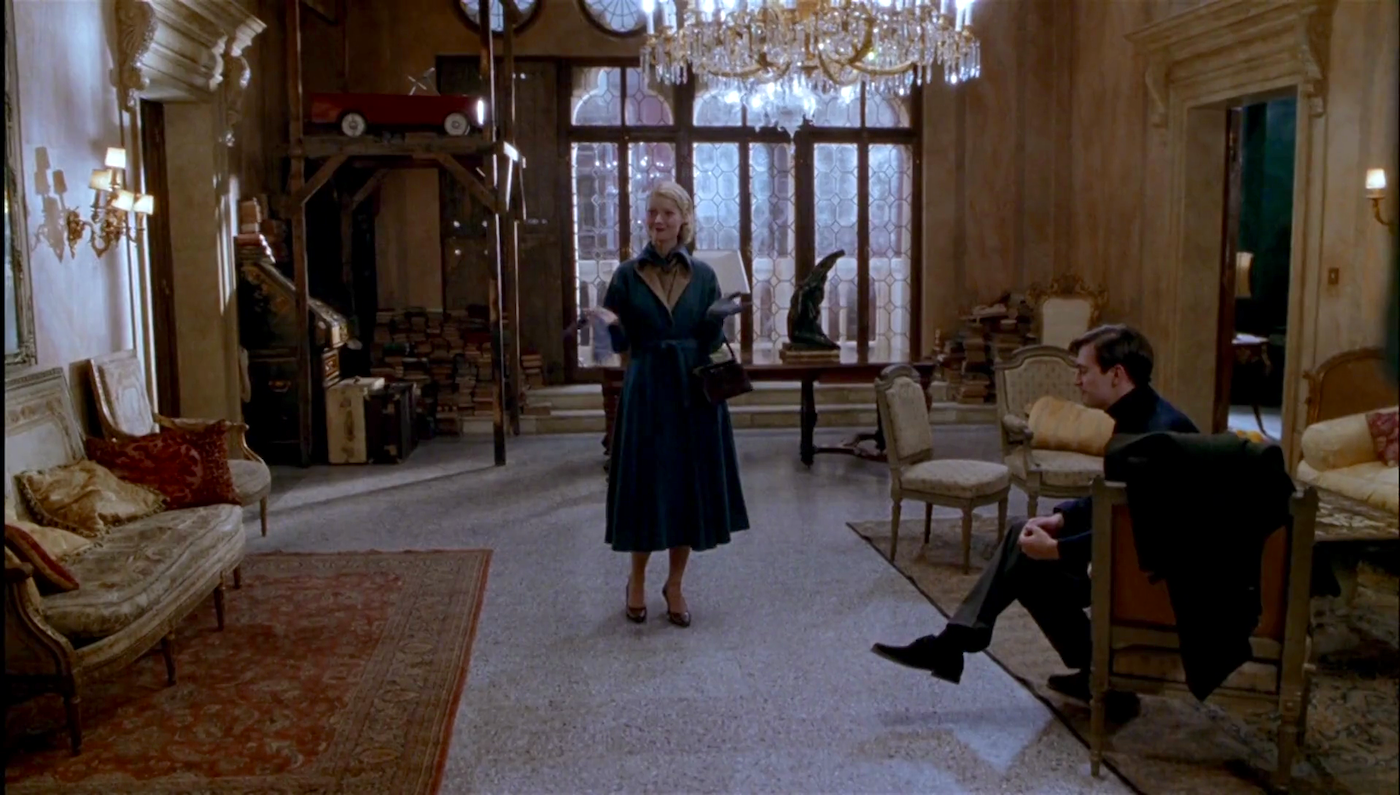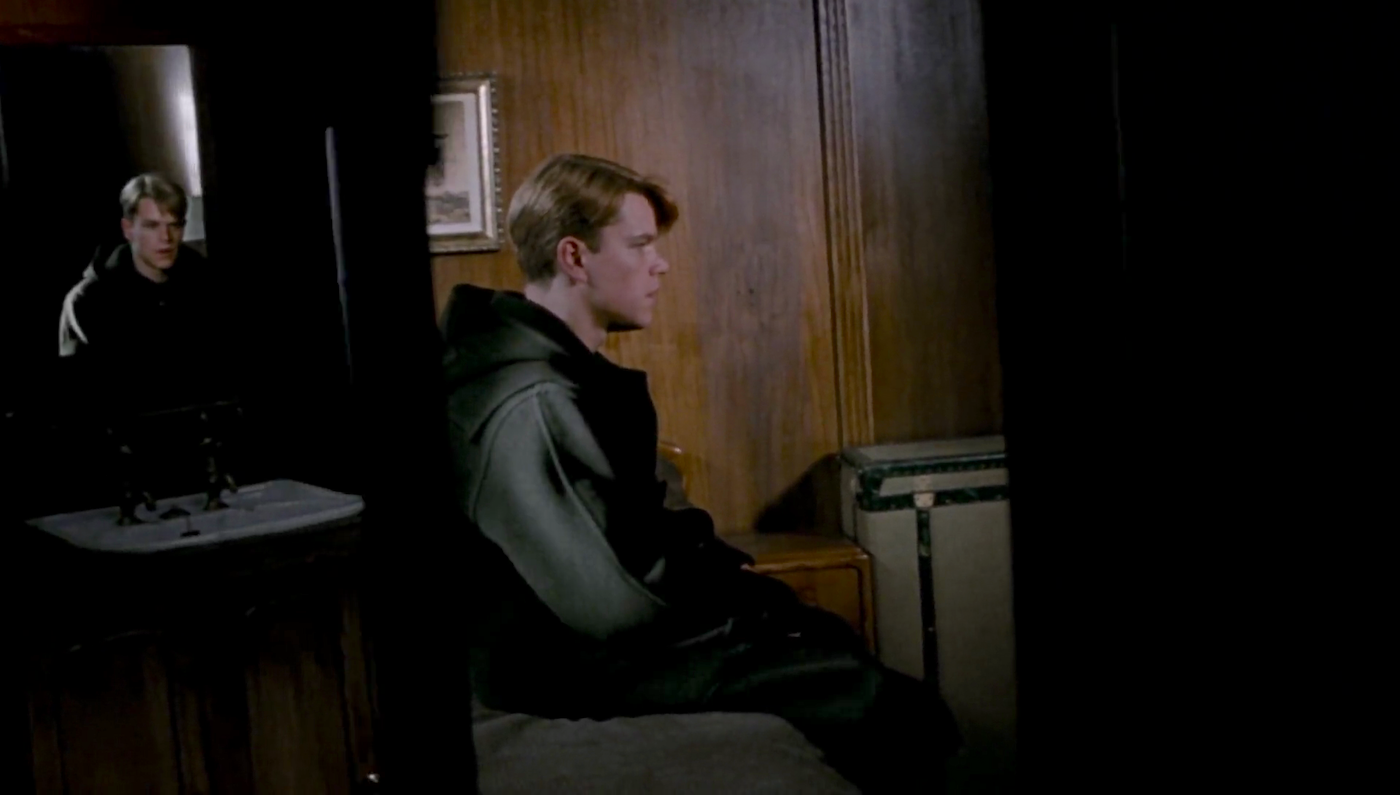"The Furniture," by Daniel Walber. (Click on the images for magnified detail)
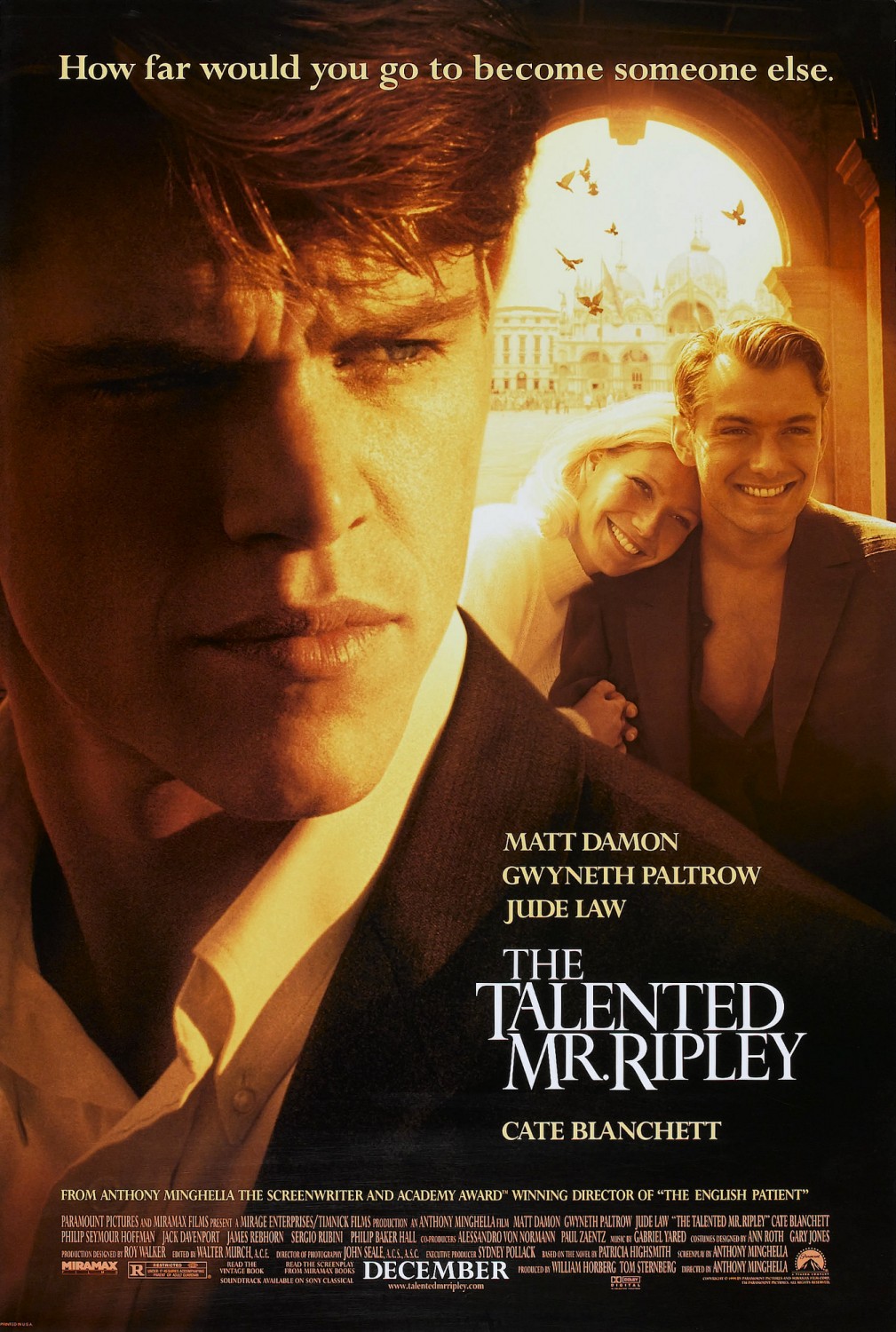 As we gear up for a Patricia Highsmith centennial, here’s a not-exactly-fun fact. Only one adaptation of her work has been nominated for Best Production Design at the Oscars: The Talented Mr. Ripley. (An earlier version of this article erroneously stated that Carol had also been nominated for this award, as the author had unconsciously, but happily, written The Danish Girl out of his memory. Carol was nominated for costume design, not production design.)
As we gear up for a Patricia Highsmith centennial, here’s a not-exactly-fun fact. Only one adaptation of her work has been nominated for Best Production Design at the Oscars: The Talented Mr. Ripley. (An earlier version of this article erroneously stated that Carol had also been nominated for this award, as the author had unconsciously, but happily, written The Danish Girl out of his memory. Carol was nominated for costume design, not production design.)
Production design is central to Anthony Minghella’s adaptation of the first Ripley novel, given that so much of the plot hinges upon taste. The young Tom (Matt Damon) ingratiates himself to Dickie Greenleaf (Jude Law) with his self-trained taste in jazz. Freddie Miles’s (Philip Seymour Hoffman) knowledge of his friend Dickie’s taste in furniture is what gets him killed. Ripley’s games of subterfuge and impersonation depend upon his understanding of style and class - and his own fluctuating taste in other people will lead him to the film’s violent end.
All of this perhaps explains why Minghella and the Oscar-nominated team of production designer Roy Walker and set decorator Bruno Cesari decided to set Tom’s beginnings in a comically bare New York City apartment...
The assertion seems to be that Tom is so poor, his walls don’t even have plaster. This is ridiculous. But it’s also a statement of character. The young man is a total blank slate, with no taste of his own. To give him wallpaper, even paint, would ruin his affectless mystique.
The scary thing about Ripley, after all, is not that he is able to mimic accents and outfits. Rather, it’s that he seems to have no attributes beyond those that he’s acquired before our eyes. After he allows Dickie’s father to imagine him at Princeton, his past dissipates. He studies jazz, hops on a boat, and before long he’s got a foot in Dickie’s door.
Dickie and Marge (Gwyneth Paltrow) live by the sea in the fictional town of Mongibello, in a house full of stuff. They spend most of their time lounging over painted tile and under ancient wooden beams, their effortless vibes accented by carefully placed rocks and quite a few plants.
Did I mention the tile?
Much will be made about Dickie’s taste later on, but it’s actually hard to believe anything about this decor was his decision. Marge even has to talk him into getting an icebox, when he’d rather spend the money on a new car. Overall, it's an unremarkably tasteful Mediterranean rental, decked out in classic style.
As the plot bounces around the peninsula, we watch Tom encounter and absorb such iconic spaces as the glitzy hotels of San Remo and the ruins of the Roman Forum, not to mention the vast collections of Italy’s greatest museums. Here he strolls, entranced by a very large foot.
In a sense, Tom’s downfall only comes after he briefly flirts with developing an aesthetic of his own. He won’t be ruined by his first murder, but his second. After killing Dickie off the shores of San Remo, he rushes back to Rome and begins to pose as his victim. He rents an apartment as Dickie, decorating it himself.
He decks it out for Christmas and experiments with classical sculpture.
But then Freddie comes to call, observing immediately that Dickie could never have decorated this apartment. It’s not clear exactly what gives Tom away, but it hardly matters. The impostor can sound like Dickie, he can look like Dickie, he can even forge Dickie’s signature, but he can’t replicate his taste. So poor, cocky Freddie gets a bust to the head.
The next time Tom gets to decorate an apartment, he’s found his way to Venice and into the arms of Peter (Jack Davenport) - a pianist who Minghella frames against the golden mosaics of Venice’s Byzantine-inspired churches.
Tom’s Venetian place managed to feel both empty and over-decorated. Books are everywhere, piling up in the corners and in front of the windows. There’s a child’s toy car up on some scaffolding, scattered Persian rugs, a chandelier. The walls are painted to look like marble. It’s the flat of a man who has yet to make up his mind.
Which is a shame, frankly. Tom nearly gets away with it all, two murders and all sorts of fraud neatly packed away in Mr. Greenleaf’s disdain for his son. Marge has been toted back to New York, her suspicions ignored by everyone. Tom gets on another boat with Peter, this time bound for Athens. But there’s one more twist. Meredith (Cate Blanchett) spots him, the last unpulled thread. She still thinks he’s Dickie, and she threatens to ruin everything.
He has a choice to make. There will obviously be one more murder, but who will it be? With Meredith out of the way, he could finally just be Tom. He could wear black turtlenecks, play the piano and enjoy Peter’s adoration. Yet the attraction of being Dickie is, perhaps, too much. He strangles Peter and is left in a lonely cabin, another subterranean space nearly as bare as ridiculous Manhattan tenement. He has nothing left but himself - and a mirror.
